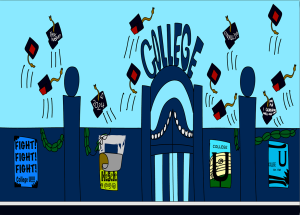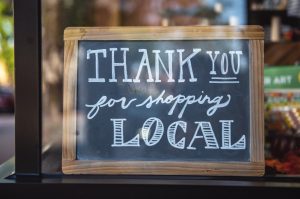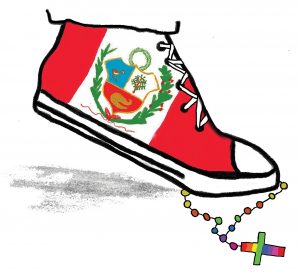Eight months into the pandemic, the upcoming holidays might seem like a reprieve from the current monotony and hopelessness. However, as Americans look ahead to the end of 2020, many seem to be purposefully ignoring the fact that we are still in a pandemic.
Social distancing, wearing masks, staying home and everything else that has been recommended to limit risk and keep the number of coronavirus cases—and deaths—low seem to be slowly fading out of minds, even as numbers rise. While this is definitely not a good thing, the approaching winter holidays and everything that comes along with them poses an even greater risk for the third spike in cases.
The Centers for Disease Control and Prevention has categorized Thanksgiving-related activities based on risk, with indoor gatherings of people outside your household and going Black Friday shopping in crowded stores as those to be avoided. With many Americans feeling restless and isolated from their loved ones and the normalcy of pre-pandemic life, we may be looking at a large spike in the last six weeks of the year.
Although it might not feel like it, coronavirus cases are increasing across the country, especially in the Midwest. Whether you’re in an area with low cases or are feeling so fatigued by the pandemic and the news cycle that you don’t notice the numbers going up every day, the situation isn’t slowing down or stopping just because you’re tired of it. Pretending to go back to normal by visiting family or friends over the holidays doesn’t mean things will actually be normal.
Travel appears to be a major contributing factor in the several spikes in cases the United States has seen since March of this year, including in late summer when many students went back to school. In any regular year, Thanksgiving is a holiday marked by high volumes of traffic in small amounts of time, much more so than the December holidays. Last year, AAA predicted travel of over 50 miles by 55 million Americans in cars, trains and planes. While it seems like this number will decrease, there is no saying by how much or what precautions these travelers will take before, during and after their trips.
Because of this uncertainty, many schools all over the country are either ending their fall semesters early or going entirely remote—if they weren’t already—after the Thanksgiving holiday. Universities are scrambling to come up with plans for students and faculty to keep their numbers low in hopes of returning safely in the spring as it becomes clearer that even a short break for Thanksgiving could result in a huge spike in campus cases when students come back for classes after the long weekend.
For Columbia College Chicago students, all but a few dance, cinema, theater and photography courses will be entirely remote from Nov. 30 to the end of the semester on Dec. 19. In an Oct. 20 email Marcella David, senior vice president and provost, reminded students and employees that quarantining is required either before leaving or when returning to campus.
Loyola University Chicago will be ending all in-person instruction on Nov. 22, the beginning of Thanksgiving break, and will remain online through the end of the semester on Dec. 5. Roosevelt University will be going entirely remote after Nov. 30 through the end of the semester on Dec. 19.
The winter months are poised to bring a new spike in cases with more indoor gatherings to avoid the cold, flu season, pandemic fatigue and of course, students traveling or returning home. Even though you might want to get inside to avoid the chill, see your out of state family or try to get a sense of normalcy outside of your home, it’s not going to get safer as we approach the end of the year.
You might be thinking you’ll be fine. You’re not worried about traveling to the next state over to see family for dinner and then going back home—but nothing is simple anymore. Maybe you’ll get tested or quarantine before you leave, drive with your family members and wear a mask and social distance when you make stops. How can you ensure that everyone else you’ll be seeing on the journey and at your destination is doing the same?
Many Americans don’t understand how the coronavirus spreads, which might explain why case numbers continue to rise due to a lack of precautions being taken. What if you can’t travel in a way that lets you avoid contact with others outside your household?
It might seem like there’s no clear answer here. There might not actually be. But by staying home for Thanksgiving and other winter holidays this year, Americans can make an effort to reduce a spike in cases. Otherwise, there’s no telling who will be put at risk.
This pandemic is exhausting for millions everywhere. Although there’s no end in sight, if we want to see that end soon, that means buckling down for winter with social distancing, masks and no travel or large gatherings.












Be First to Comment